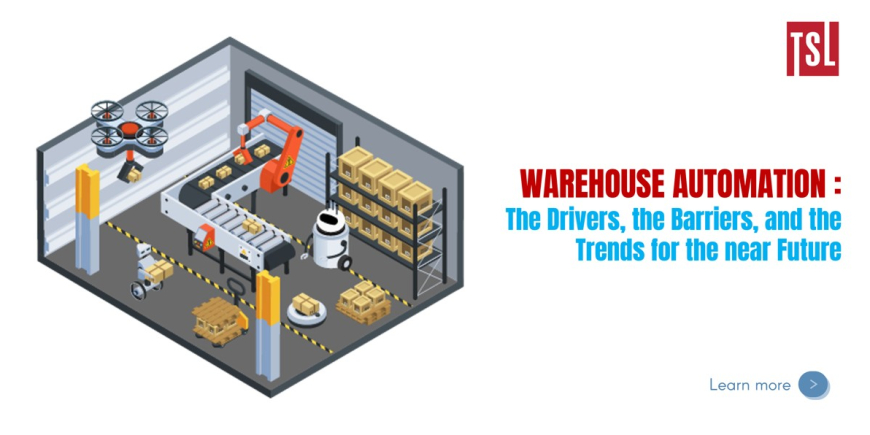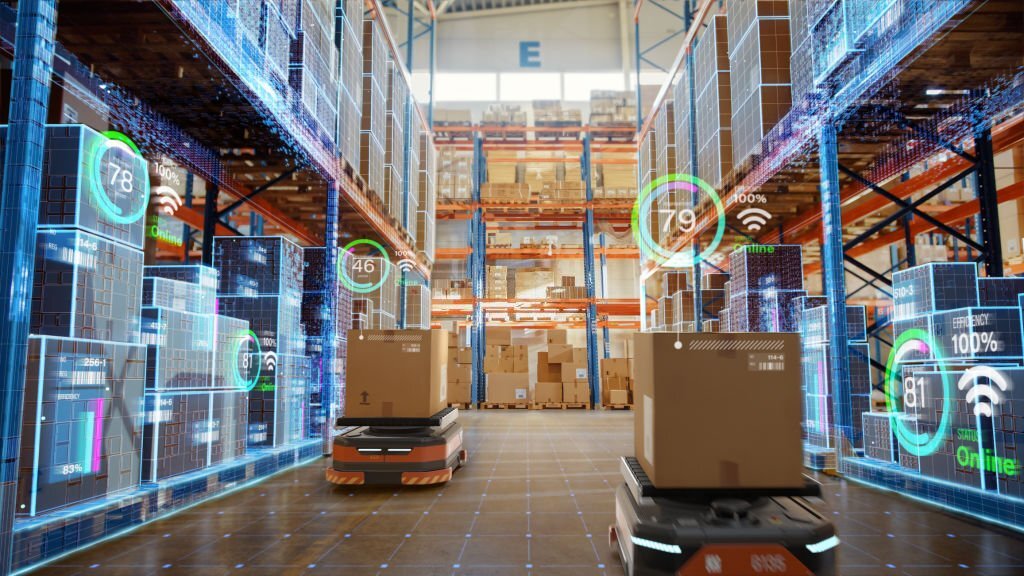Warehouse Automation: The Drivers, the Barriers, and the Trends for the near Future
Warehouse automation has grown rapidly in recent years, spurred by labor shortages, supply-chain disruptions, and the growth of direct-to-consumer e-commerce purchasing. But, despite the obvious need for automation and its proven benefits, the potential of autonomy remains largely untapped.
The report on 2023 Warehouse Automation Trends polled more than 1,000 supply chain professionals across industries, including automotive, third-party logistics (3PL), consumer goods, manufacturing, e-commerce, and retail has identified the key drivers toward warehouse automation, the obstacles that hinder adoption and the trends in automation we’ll see this year.
What’s Behind the Push to Automate
Warehouses, which make up a critical link in the supply chain as hubs of storing and shipping, are severely understaffed. According to Deloitte’s report (2023), 57% of the total 2000 surveyed businesses reported that finding personnel is one of the major challenges in supply chain management. Additionally, 56% of businesses also express concerns about the issue of skilled labor shortages (Freightwaves, 2023). Overall, the market is understaffed by 10% to 25%, with material handlers and forklift drivers making up the biggest gaps, at 34% and 31%.
The labor shortage was the most cited driver for automation in the report, named by 25% of respondents, but it wasn’t the only one. Respondents — which included chief supply chain officers, CTOs, and executives in finance, HR, and IT — also identified continued supply chain disruptions (22%) and the growing trend toward direct-to-consumer purchasing (18%).
Re-shoring of manufacturing (15%), corporate directives (12%), and throughput problems (8%) were also cited. Another factor looming down the road is the aging population — by 2034, U.S. adults aged 65 and older will outnumber children under 18.
Automation can significantly help address these problems. A wide majority of supply chain professionals who have adopted automation say it’s been a positive for workers, with 70% highlighting improved retention, and more than half recognizing its ability to up-skill employees and create new job opportunities.
More than 85% of respondents said they planned to deploy some form of automation within 12 months. But there are hurdles standing in the way, and although industry leaders are aware of its benefits, automation remains under-used. Seventy-six percent of companies in the survey, for example, have never deployed an automated guided vehicle (AGV), and 70% have never implemented an autonomous mobile robot (AMR).
The Barriers Holding Back Widespread Adoption
The reluctance of manufacturers to implement automation solutions is typically based mostly on cost concerns. When asked to name the biggest obstacles to future automation plans, budget (41%) and cost/ROI (40%) topped the list. (Cost/ROI also was cited as a problem in the past, with 54% saying it had hindered previous implementation plans.) Other barriers included training and change management, implementation, integration, process, space, disruption, and fear and uncertainty.
Curiously, all the barriers show a negative correlation to facility size, except for cost/ROI. While you might expect the barriers to be more pronounced with smaller facilities with fewer resources, the correlation with cost/ROI trended in the other direction: the larger a company’s revenue, the more budget and cost/ROI considerations became obstacles. There are a few factors that could contribute to that.
One is long-term strategic ROI vs. short-term ROI. Decision makers at large firms could be under more pressure to demonstrate short-term returns to their business unit. Smaller companies might have more runway to consider automation as a strategic, long-term investment and competitive differentiator.
Another is CapEx vs. OpEx models. Large companies may be tied to outdated CapEx cost models that are delaying the rapid adoption of automation at scale.
An emphasis on proven value. A company with financial discipline may look skeptically at new technologies, which may have to do a better job at proving their value to that company’s environment than existing technologies or practices.
What to Expect in the near future
Barriers to adoption notwithstanding, industry leaders are beginning to make automation a priority, looking to get robotics and other warehouse technologies on the floor sooner rather than later. Based on the data in the survey, here are the top five trends for this year and the near following years,
-
- Because a lack of high-speed, secure internet is the biggest tech obstacle to automation, expect to see companies give priority to 5G Wireless. In fact, 41% of survey respondents — and close to 50% of those in the manufacturing sector — plan to adopt 5G within the next 12 months.
- Organizations throughout the supply chain are looking to standardize disparate warehouse management systems (WMS) or enterprise resource planning (ERP) across modern cloud-based systems. Thirty-eight percent of warehouses are planning upgrades in the next 12 months.
- Consumer goods, automotive, and third-party logistics (3PL) will continue to lead in automation adoption, with retail lagging behind.
- The labor shortage will spur automation in pallet-moving roles, with case picking representing the largest automation potential.
- While material handling equipment (MHE) robotics for pallet-sized loads is still in its early stages, 31% of facilities surveyed plan to deploy MHE in 2023, and nearly 70% have some of their budgets earmarked for new MHE solutions in the next year.
A More Automated Future
Warehouse decision-makers face some genuine hurdles in moving toward the widespread adoption of automation and robotics. But the reasons for automating — as well as the benefits — make it well worth the investment. Automation is essential for a company to remain competitive and viable, which is why the global warehouse automation market is projected to expand to $69 billion by 2025.
Make a free consultation appointment with TSL right away to discuss supply chain automation options that are suitable for your company. At TSL, we have a team of highly knowledgeable and skilled experts who can provide you with state-of-the-art consultancy services and assist you in making the decisions that are best for your company. Regardless of your industry, your commodity, your key markets, or the scale of your business, TSL has the answers to your problems.
Source: Supply Chain Brain










